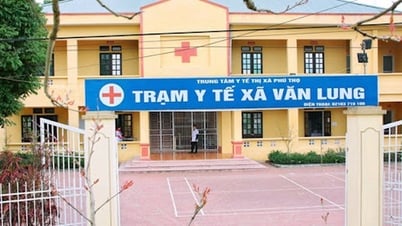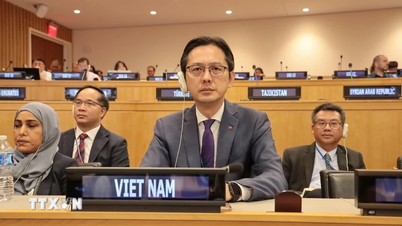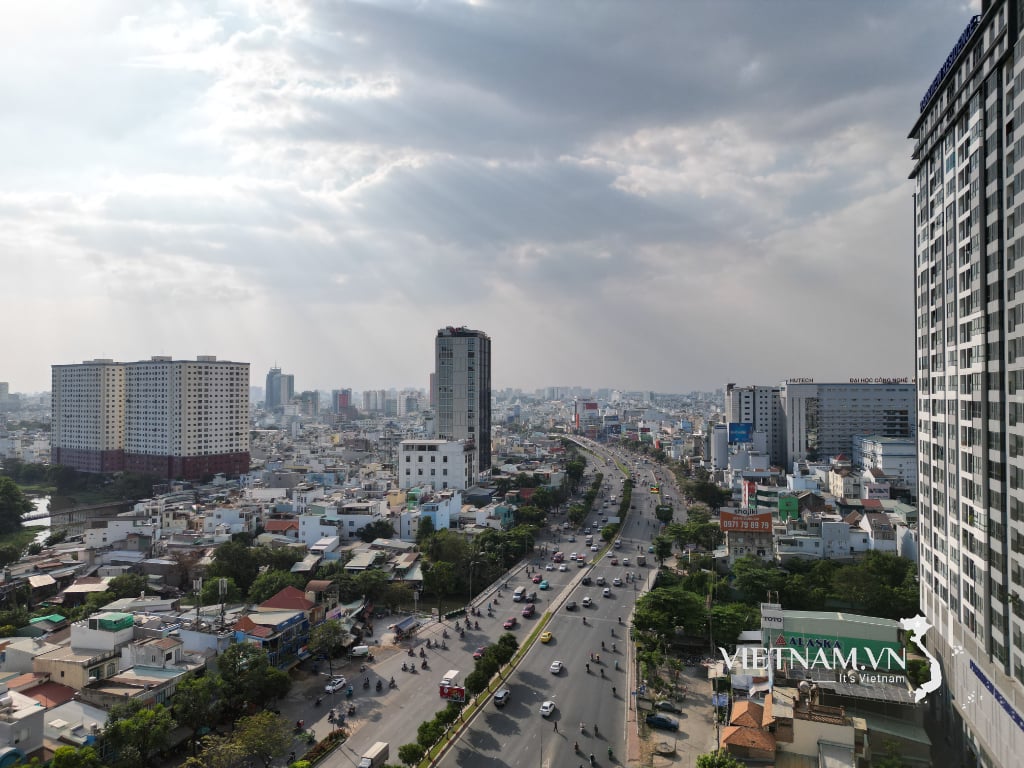Vietnam is in the golden population period, creating huge advantages for socio -economic development.
The Ministry of Health said that from 2006 to 2021, our country has achieved and maintained the replacement fertility rate; maintained a suitable population growth rate; the population size in 2024 will reach more than 101 million people. Vietnam is in the golden population period, creating great advantages for the socio-economic development process; population distribution has become more reasonable; population quality and human development index (HDI) of our country are constantly increasing; the average life expectancy of Vietnamese people is increasingly improved. This result is an important premise for shifting population policy from family planning to population and development.
Through reviewing relevant legal documents, the Ministry of Health found that many regulations related to population work have not ensured consistency and uniformity with the current legal system and do not meet practical requirements, specifically as follows:
Firstly , some contents of the Population Ordinance are no longer consistent with the Constitution, such as: regulations restricting the right to decide on the number of children (Article 10).
Second , some contents of the Population Ordinance are no longer consistent with current legal documents or have been stipulated by legal documents, such as: regulations on restricting population concentration in some large urban areas (Article 18 of the Ordinance).
Third , some legal regulations on population are no longer suitable for the practical situation and do not meet the requirements of population work in the new situation, such as: regulations limiting the number of children (each couple has one or two children); there are not enough incentives (housing, health care, education, taxes, working time, maternity leave and childcare...); the penalty level is low and not commensurate.
The reality of Vietnam's population has given rise to serious problems that must be promptly resolved.
The national fertility rate is trending downward below the replacement level, from 2.11 children/woman (2021) to 2.01 children/woman (2022), 1.96 children/woman (2023) and 1.91 children/woman (2024) - the lowest in history and is forecast to continue to decline in the following years (if the fertility rate continues to decrease, by 2039 Vietnam will end its golden population period, in 2042 the working-age population will peak and after 2054 the population will begin to grow negatively.
Gender imbalance at birth becomes a challenge: In 2006, the sex ratio at birth was 109.8 boys/100 live births - exceeding the natural balance threshold (103-107); in 2015 it was 112.8, in 2024 it was 111.4. Thus, the sex ratio at birth is always high. It is forecasted that if the sex ratio at birth remains the same as it is now, Vietnam will have a surplus of 1.5 million men aged 15-49 in 2039 and increase to 2.5 million in 2059. That will lead to the risk of breaking down the family structure, a part of men will have to marry late, will not be able to marry, increase the trafficking of women, girls, prostitution, gender violence, transnational crime... There is no synchronous solution to adapt to population aging, aging population; Elderly health care services are limited. Population quality does not meet requirements.
According to the Ministry of Health, from 2016 to present, investment resources for population and development are still low and not commensurate with the demand. The period 2011-2015 was about 740 billion/year, the period 2016-2020 was only under 360 billion/year. From 2021 to present, after the end of the Health - Population Target Program, period 2021-2023, although the actual demand averaged up to 800 billion VND/year, the locality was only able to allocate about 95 billion VND/year and the Central Government was only able to ensure about 25 billion VND/year (meeting only 15% of the demand).
Shifting the focus of population policy from family planning to population and development
The Ministry of Health said that, regarding the scope of regulation, the draft Population Law institutionalizes Resolution 21-NQ/TW focusing on shifting the focus of population policy from family planning to population and development with the following specific contents:
Regarding population size: Regulate measures to maintain replacement fertility; regulate the rights and obligations of each couple and individual in having children, including allowing couples and individuals to decide when to have children, the number of children and the interval between births. Continue to inherit the provisions of the 2003 Population Ordinance on population size that are still suitable for socio-economic conditions: Regulations on population size adjustment; family planning; propaganda and consultation on family planning; provision of family planning services.
Regarding population structure: Regulate measures to minimize the selection of fetal sex to ensure gender balance at birth according to natural reproductive laws; effectively take advantage of the golden population structure period; adapt to population aging and aging population.
Regarding improving population quality: Regulations on measures for counseling and health check-ups before marriage and childbirth; prenatal and neonatal screening, diagnosis, and treatment; building prosperous, equal, progressive, happy, and civilized families.
Regarding measures to implement population work: Regulations on measures for propaganda, communication, education; measures on human resources, finance, scientific research, international cooperation; measures on integrating population factors into socio-economic development plans. Continuing to inherit the provisions of the 2003 Population Ordinance on population distribution.
On state management and responsibilities of agencies, organizations, families and individuals regarding population work: Regulations on state management contents regarding population work; state management responsibilities regarding population work of the Government, the Ministry of Health, relevant agencies and organizations; responsibilities of families and individuals regarding population work.
In addition to the contents regulated in the Population Law, the population issue aimed at institutionalizing Resolution 21-NQ/TW is currently being regulated by relevant laws (Law on Marriage and Family, Law on the Elderly, Law on Gender Equality, Law on Children, Law on Youth, Law on Medical Examination and Treatment, etc.). Currently, the Ministry of Health is developing a Project on Disease Prevention Law, including a policy on ensuring nutrition in disease prevention, which has proposed solutions to ensure proper nutrition according to the life cycle and by subject, contributing to improving the stature and physical strength of Vietnamese people. Therefore, to ensure the consistency of the legal system, the Population Law will not adjust the contents already stipulated in the above laws.
Regarding the subjects of application , the Population Law applies to Vietnamese citizens; people of Vietnamese origin whose nationality has not been determined and who are living in Vietnam; domestic agencies and organizations and foreign agencies, organizations and individuals related to population work in Vietnam.
Layout of the draft Population Law
The Draft Population Law consists of 06 chapters and 35 articles, structured as follows:
Chapter I. General provisions (from Article 1 to Article 6); regulations on scope of regulation, interpretation of terms, implementation principles, State policies, Vietnam population day, prohibited acts.
Chapter II. Population size, structure, and distribution (from Article 7 to Article 14); regulations on measures to regulate fertility, family planning, rights and obligations of individuals, measures to maintain replacement fertility, control gender imbalance at birth, and reasonable population distribution between rural and urban areas.
Chapter III. Improving population quality (Articles 15 to 19); regulations on pre-marital health consultation and examination; prenatal and neonatal screening, diagnosis, and treatment; building civilized families, developing a care network and human resources for elderly care.
Chapter IV. Measures to implement population work (from Article 20 to Article 30); includes 3 sections: propaganda and mobilization, resources - finance - international cooperation, and integrating population factors into socio-economic development plans.
Chapter V. State management and responsibilities of agencies, organizations, families and individuals regarding population work (from Article 31 to Article 34); defining the content and responsibilities of state management from the central to grassroots levels and the roles of socio-political organizations and individuals.
Chapter VI. Implementation provisions (Article 35); regulations on the effective date and amendments to relevant legal documents to ensure consistency in the legal system.
Source: https://baochinhphu.vn/du-thao-luat-dan-so-102250526110202723.htm









































































































Comment (0)